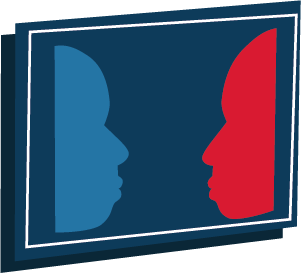Critical Incidents: Intercultural Sensitivity
Back to: Training Session: Critical Situations in Intercultural Contexts
In the course section about intercultural sensitivity you became familiar with the development model by Milton Bennett. You learned that cross-cultural sensitivity is a development process comprising six stages. The concept can help you to assess situations of intercultural interaction and communication.
Some examples can show the different stages of intercultural sensitivity and the problems they may cause.
Example 1
Amina, a 16 years old girl from Yemen, left her country with her mother and older brother after severe traumatising experiences. Her father and her younger brother were killed in the war. After a long and arduous journey Amina and her mother arrived in Denmark where they had to stay in a refugee camp for several months. After their asylum request was accepted they were sent to a small town and placed in an apartment block where refugees from different countries lived. The place had become sort of a ghetto.
 NEFRATON, flickr
NEFRATON, flickrAmina attended the local secondary school now. The culture clash was hard for her. Her Danish was not so good yet, and although she was not the only Muslim in the class she was the only one wearing a headscarf and covering her arms and legs completely, even in summer. During the first week the students in her class, all 15 to 16 years old, started to avoid her, to laugh at her or to gossip about her look. After some days the class is divided into couples for an exercise. Nobody went to Amina so the teacher assigned somebody to her. She built a team with a Danish girl, Astrid. During the activity they did not talk to each other a lot; most of the time Astrid was staring at Amina. After finishing the teamwork Astrid started addressing Amina:
„So you are one of those people who only want our money and profit from our country?“
„My mother says that you are all dangerous.“
„Girls wearing headscarves are slaves of men“.
Amina’s reaction was to hang her head. She did not reply to Astrid.
What do you think about this incident?
Example 2
Tom, a young man from Eritrea, is living for some months now in a German accommodation for refugees. He attends a language class and is very interested in his host country’s lifestyle and culture. The language teacher, Jens, is a student working as a voluntary helper. Tom and Jens sometimes talk for a while after the language class, and they find a lot of common conversation topics. One day, they find out that both of them like to play Badminton. Jens plays every Thursday night with a group of friends, and he invites Tom for next Thursday to join them. Tom is very pleased. He didn’t have the opportunity to play Badminton since he lives in Germany, and now he is looking forward to the match and the new people he will meet.
On Wednesday during the language class Jens asks the students to discuss a political issue the media were reporting about in the past days. Tom and others express their opinion, and also Jens says what he thinks about the topic. His point of view is opposite to the comments that Tom has made. Jens sais that he thinks that Tom’s point of view is wrong. After the lesson Tom disappears quite fast. The next day he sends Jens a message that he won’t join the Badminton match. Jens is disappointed. He thought that Tom would like to play Badminton and make new German friends.
What do you think about this incident?
 What is happening here? Please consider phenomena of misinterpretation, stereotyping, judgment and discrimination.
What is happening here? Please consider phenomena of misinterpretation, stereotyping, judgment and discrimination.